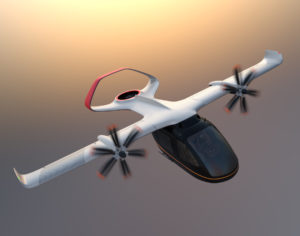You’ve probably been told about the importance of prototyping before, and I’m here to say it still is very important. I can’t tell you how many clients have come to me saying they need help developing a prototype to get funding or the feedback they need to finish developing the product.
There are many types of prototypes, from cosmetic, to fit and finish, to full functioning. Each has its own place, and different prototyping processes can help you create them. Let’s take a look at prototyping, why it’s important, and how to utilize it as a tool.
What is prototyping?
It’s generally the first time a product idea is in an interactive form. This can be as simple as a website layout, doesn’t even need working buttons. It can be a physical product that you can hold in your hands. There are many types of prototypes, but usually interactive ones are the type that most people get excited about.
Prototypes don’t have to be the entire product, they can be for a design review or component test. Prototype volumes can vary, however 1,000 units at a time is a typical start into production.
BLANK
Ian Peterman, CEO Tweet

So how important are prototypes?

The importance of prototypes can be measured by the cost of not having them. Products that go out completely un-prototyped typically fail in some expensive way. While not every product absolutely needs a prototype, I think they should be. I’ve created single parts that were approved into mass production and had no issues.
I’ve also seen products go to production without proper prototyping and be very expensive to fix. At that point, every product that goes to production and fails somehow causes pain in every part of the company, and costs that make management lose their minds. For example, thermal and stress analysis are two types of testing that can be done digitally.
Good engineering is also key to making sure the product works. Typically less prototyping is needed when working with all off-shelf components. Think of roads and skyscrapers. All of the testing, trial and error, and analysis as already been done on existing products.
This is why off-shelf components save development costs. That new product idea that you are wanting to develop that’s never been done before though? No direct data can help us with that. We can only infer from similar products and projects.
What can we do with prototypes?
BLANK
Ian Peterman, CEO Tweet
The answer is a lot can be done with prototyping. The most important thing prototyping helps are form and fit checking, function testing, other forms of testing, and user feedback.

When you have functional prototypes made, you can test them like any other real product. You can send them to people to use and get feedback from or things like destructive testing. One of the most powerful tools to have for presenting a concept to investors or customers is a functioning prototype.
As humans, we rely on all our senses to experience things fully. The more senses we can use when looking at a product, the more feedback we can give. This is why 3D models are so powerful as a review tool, and why we use them constantly. Being able to hold a product gives a better idea of it than a 2D image or perfectly rendered 3D ones. The next step is a tangible product you can use your hands to touch.
To us a feasibility study is not to determine if it can or can’t be done, but what path is the best path to create the results we learned in our first phase that are important to our clients. Sometimes this means redirecting the project into an entirely new vision. But first, we dive into a large ocean of research to understand the possible problems, roadblocks, users, market, and technical requirements. We often start on the fuzzy end and move to the technical.

Can we still use 3D printing? Yes, it’s great for many different prototypes, but here are 3 places not to use 3D printing to prototype. Final prototypes are best when made from the final production materials. With metals, 3D printing is not a cost-effective way to prototype and production processes almost always must be used.
BLANK
Ian Peterman, CEO Tweet
Prototypes can involve many different processes, from casting, to clay modeling, to carving foam. What matters is getting the information from the computer and into a physical form. This allows the people involved to examine the product in new ways.
Now that you know about the importance of prototyping, I suggest you check out the Wikipedia on Prototypes.
Your Next Steps
Related Conscious Design BLOG Posts
What’s a Feasibility Study?
A feasibility study is a very important step in making sure a product will be successful. I break down what they are and why they matter.
What it Takes to Develop a Smart Product
As the Internet of Things has grown over the years, smart products have become a pretty hot item. Many people have product ideas for turning a “dumb” product into a “smart” one. It’s great, I love that we are improving our tools and gadgets in so many new and interesting ways. Technology is something that amazes me, and will probably continue to do so for the rest of my life. For a lot of people, it might seem like a fairly simple task to just add some electronics to a product and make it smart. You should understand what you or your business will need to developing such a product. You might have gotten an idea about what it really takes in our post a couple weeks ago Time, Budgets, & Luxury, but I’d like to dive more into exactly what it takes to create a smart product. There is a lot of time and effort that is beyond what low-tech products need to become a reality. For us, “smart” is anything that contains electronics that can connect to other electronics, so wi-fi, Bluetooth, NFC, USB, etc, usually there are sensors or other input points that collect data to be shared with other devices. Putting a motor into a mower doesn’t make it “smart”. Putting a computer on board with internet access, connected to an app would make it “smart”. A “smart” product doesn’t always have to touch the internet either, there are many closed circuit smart devices. IOT (internet of things) products MUST touch the internet however. In no particular order, here is a breakdown of everything that goes into developing a “smart” product. This will give you an idea of what you can expect if you choose to dive into this process. Disciplines required Most “dumb” products can get away with just an Industrial Designer or Mechanical Engineer. Both work, but you can read more about the differences in our post3 Things You Should Know About Designers & Engineers. No electronics means no coders, no electrical engineers, and many others. If you are working with basic electronics, such as motors, switches, etc, you can sometimes avoid getting an electronics person involved. BLANK Ian Peterman, CEO Tweet There are many mechanical side people who can make that happen. Now, if we’re creating a “smart” product, we will need these: App Design & Development Electronics Design Electrical Manufacturing Web Design & Development There are possibly a few others depending on how big you go, such as database development, but these areas would cover most of the work needed to get the project done. Time It can easily double the amount of time to design and develop a new product by adding in electronics that would make a product “smart”. Does this mean it would take longer on a calendar? Not necessarily. When we can, we prefer to do side-by-side development of the mechanical and electrical. This ensures both sides work together and keeps the timeline shorter. The collaboration between mechanical and electrical can really build some synergy with the project. The result is that issues can be caught earlier, avoiding them from popping up super late in the process where it’s harder and more expensive to fix. Cost BLANK Ian Peterman, CEO Tweet Double the time, at least double the cost. Electronics are usually more expensive to prototype. The benefit is the manufacturing on the back end makes super components, even fully custom ones. These products also sell for a higher premium than their “dumb” counter parts. Planning Working on more complex projects such as this involves a lot more planning and project management. Here at the Peterman Design Firm, that is one of our core competencies. You need to make sure the firm you work with has experienced Project Managers on its team. They also need to be able to handle the load required to bring such a product to life. BLANK Ian Peterman, CEO Tweet Network We’ve talked about how important your network is in our last post Building Your Network for Success. This is a place where it really matters as you need so many resources to get the project completed. If you are working with some of the very large and expensive firms out there, they probably have such a large in-house team they can handle most things, but you pay for it. Medium sized firms often still have the network and don’t do everything in-house. Small ones and freelancers don’t always have the network you need and are often still building them. The caveat of course is if they have been in business for 20 plus years, they probably have a good network. Feasibility Study BLANK Ian Peterman, CEO Tweet I put this here just because people like to skim, and this is a key part. Feasibility studies should never be skipped with products in this category. A feasibility study is very important to do at the beginning of your project. The firm you choose to use should be able to offer this service by itself. Don’t commit to full development until you know it can be done. A complete feasibility study from the Peterman Design Firm will give you cost expectations for the entire project, time frame, potential issues, project duration estimation and breakdown, and some market information on competitors. If you’d like to learn more about feasibility studies, check out our post What’s a Feasibility Study? When you have a great idea for a “smart” product, it’s at least worth getting a consultation on the idea. If your budget can handle it, a feasibility study would be valuable. Then if it looks good, invest the money. The great thing with “smart” products is that they are in high demand. Plus we seem to be on an exponential growth with them. For now, it’s a trend I feel will stay with us for a while, if not permanently. Your Next Steps Developing Smart Products What does it take to develop a smart product?
5 Tips for Market Research & Analysis
Wondering about Market Research & Analysis? This will give you a few tips on what it is and how to start your own research.


